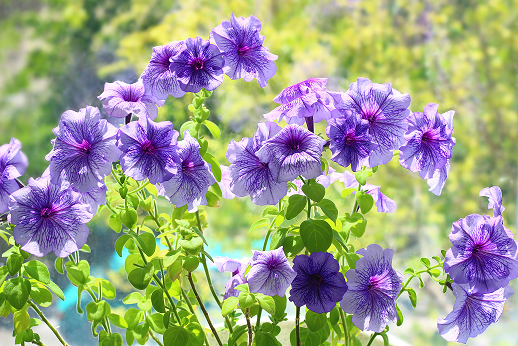Annual plants, as their name implies, grow for 1 year (or growing season) and then die. Perennial plants will grow over multiple years and in stages, sometimes appearing to die but then shooting up again in the next growing season. The key to the botanical difference between annuals and perennials lies within their roots.
In this blog I will be specifically talking about herbs or herbaceous plants. In botany the term “herb” refers to any soft leafy green plant. This excludes woody plants and trees.
Differences in Morphology
From above ground, many annuals and perennials would be difficult to differentiate. There are some general trends — annuals tend to bloom for longer periods and spend more energy on their reproduction (flowers and seed dispersal) than they do on their own growth because they only have 1 growing season to complete their entire life cycle. In general this means annuals have shorter heights or less greenery and more vibrant, larger flowers. This makes annuals a popular choice for gardening and landscaping – also considering the fact that annuals are cheaper to buy as well.
Perennials, on the other hand, may grow to be larger and have a shorter flowering period but they have the advantage of growing year after year. Perennials have plenty of time to complete their life cycles. Perennials are more likely to be native plants evolved to grow in the area they are planted which makes them hardier (less care needed) and a great choice for attracting butterflies, bees, birds, or other wildlife. Perennials can be divided and spread, which may make them a desirable choice for some gardens as well.
However, there are plenty of exceptions to these rules as each plant has its own unique characteristics to consider. The key to the botanical difference between annuals and perennials lies within their roots.
Annuals have lower root tissue density than perennials. The roots of annuals tend to be more shallow and thin but may cover a greater distance initially to allow greater resource acquisition in their only chance to survive. Perennial roots are better suited for the long term. The roots of perennials are typically thicker and deeper, protecting them from the cold and allowing them more access to water in times of drought. Perennials are more likely to have special root characteristics as well. Some roots can move water into the space between their cells, and some can convert starch into sugars to prevent freezing when temperatures drop.
Popular Annuals for Gardening
Some common annual flowers for gardens are: marigolds, zinnias, petunias, impatiens, begonias, and euphorbias.




Popular Perennials for Gardening
Some common perennial flowers used in gardens are: day lilies, hostas, hibiscus, asters, coneflowers, and bee balm.





If you enjoyed this blog on the differences between annuals and perennials, please check out my last blog on exploring the basic botanical terminology of flowers!

